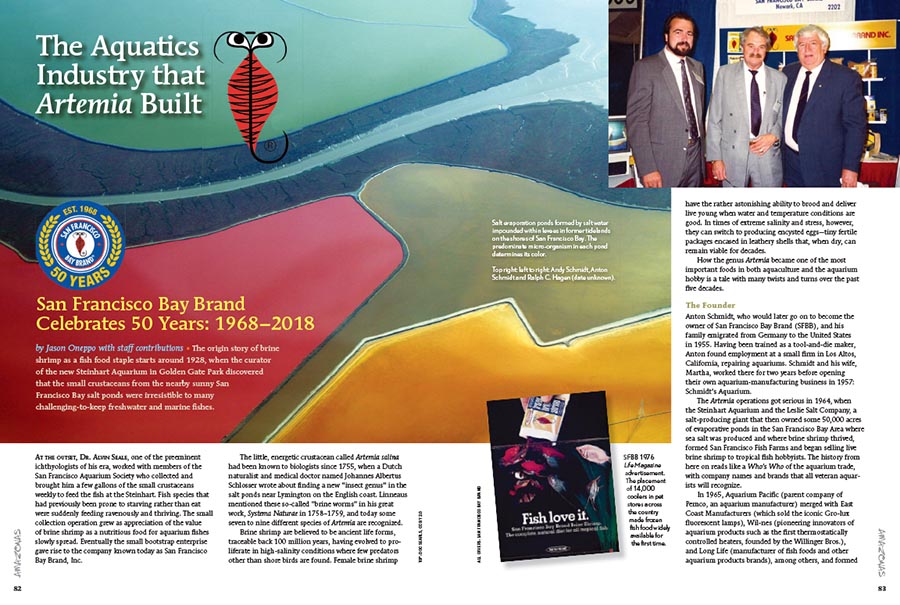
San Francisco Bay Brand Celebrates 50 Years: 1968–2018
A Special Excerpt from CORAL and AMAZONAS Magazines,
first published September/October 2018.
by Jason Oneppo with staff contributions, images by San Francisco Bay Brand unless otherwise noted.
The origin story of brine shrimp as a fish food staple starts around 1928, when the curator of the new Steinhart Aquarium in Golden Gate Park discovered that the small crustaceans from the nearby sunny San Francisco Bay salt ponds were irresistible to many challenging-to-keep freshwater and marine fishes.
At the outset, Dr. Alvin Seale, one of the preeminent ichthyologists of his era, worked with members of the San Francisco Aquarium Society who collected and brought him a few gallons of the small crustaceans weekly to feed the fish at the Steinhart. Fish species that had previously been prone to starving rather than eat were suddenly feeding ravenously and thriving. The small collection operation grew as appreciation of the value of brine shrimp as a nutritious food for aquarium fishes slowly spread. Eventually the small bootstrap enterprise gave rise to the company known today as San Francisco Bay Brand, Inc.
The little, energetic crustacean called Artemia salina had been known to biologists since 1755, when a Dutch naturalist and medical doctor named Johannes Albertus Schlosser wrote about finding a new “insect genus” in the salt ponds near Lymington on the English coast. Linneaus mentioned these so-called “brine worms” in his great work, Systema Naturae in 1758–1759, and today some seven to nine different species of Artemia are recognized.
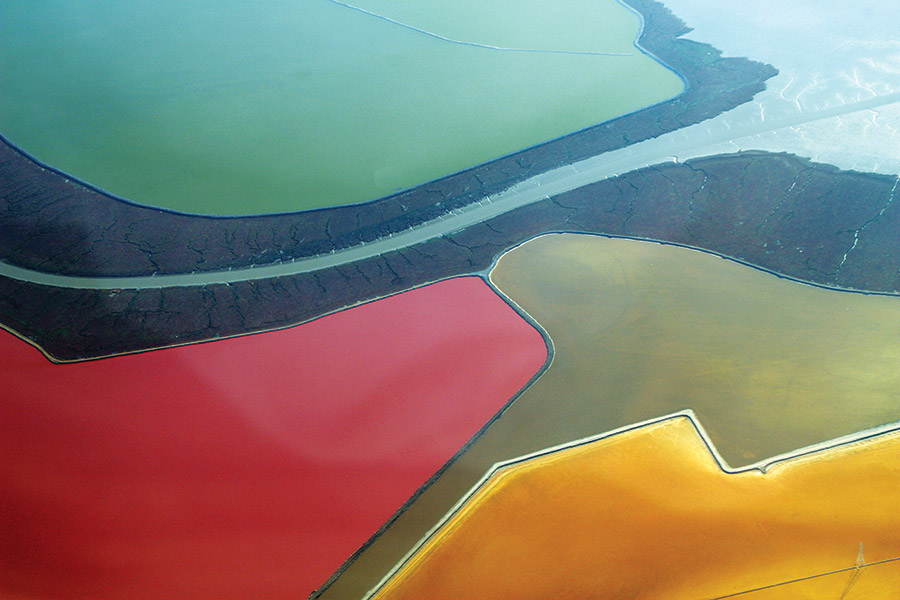
Brine shrimp are believed to be ancient life forms, traceable back 100 million years, having evolved to proliferate in high-salinity conditions where few predators other than shore birds are found. Female brine shrimp have the rather astonishing ability to brood and deliver live young when water and temperature conditions are good. In times of extreme salinity and stress, however, they can switch to producing encysted eggs—tiny fertile packages encased in leathery shells that, when dry, can remain viable for decades. How the genus Artemia became one of the most important foods in both aquaculture and the aquarium hobby is a tale with many twists and turns over the past five decades.
The Founder
Anton Schmidt, who would later go on to become the owner of San Francisco Bay Brand (SFBB), and his family emigrated from Germany to the United States in 1955. Having been trained as a tool-and-die maker, Anton found employment at a small firm in Los Altos, California, repairing aquariums. Schmidt and his wife, Martha, worked there for two years before opening their own aquarium-manufacturing business in 1957: Schmidt’s Aquarium.
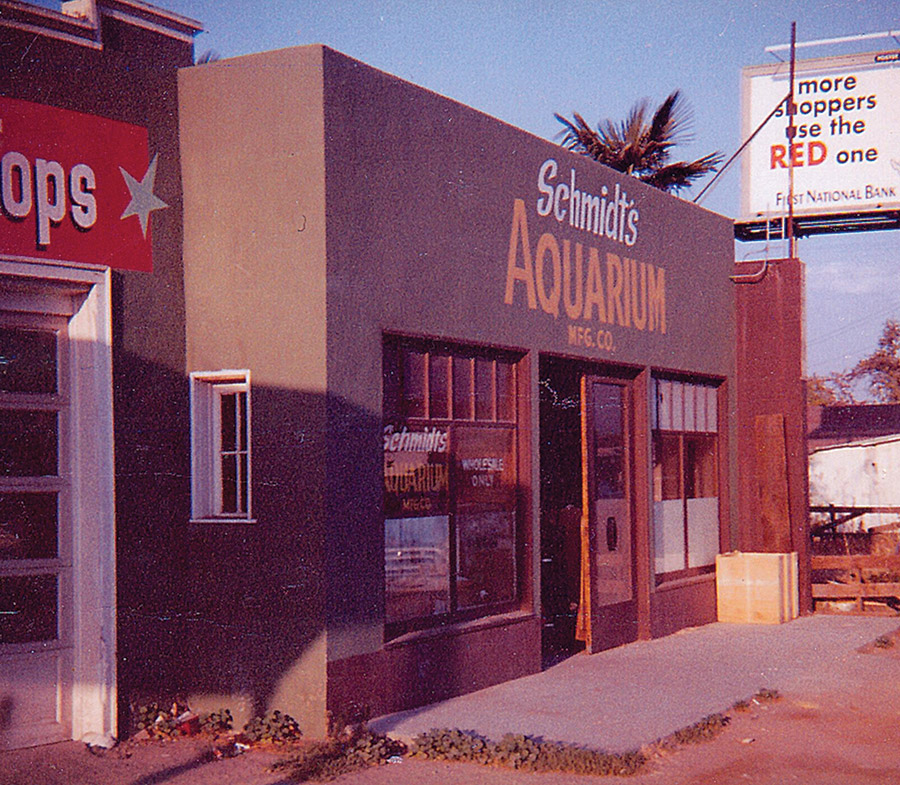
The Artemia operations got serious in 1964, when the Steinhart Aquarium and the Leslie Salt Company, a salt-producing giant that then owned some 50,000 acres of evaporative ponds in the San Francisco Bay Area where sea salt was produced and where brine shrimp thrived, formed San Francisco Fish Farms and began selling live brine shrimp to tropical fish hobbyists. The history from here on reads like a Who’s Who of the aquarium trade, with company names and brands that all veteran aquarists will recognize.
In 1965, Aquarium Pacific (parent company of Pemco, an aquarium manufacturer) merged with East Coast Manufacturers (which sold the iconic Gro-lux fluorescent lamps), Wil-nes (pioneering innovators of aquarium products such as the first thermostatically controlled heaters, founded by the Willinger Bros.), and Long Life (manufacturer of fish foods and other aquarium products brands), among others, and formed what was known as the Metaframe Corporation. Schmidt’s Aquarium manufactured stainless-steel framed aquariums until they merged to create Metaframe. The Metaframe Corporation then purchased San Francisco Fish Farms in 1968.
Sally is Born
It was during this time that San Francisco Fish Farms was branded as San Francisco Bay Brand and Sally’s Brine Shrimp was born. The San Francisco Bay Brand logo, with its cartoon brine shrimp named Sally, was trademarked in 1965, but it did not go on the packaging until the acquisition of San Francisco Fish Farms by the Metaframe Corporation in 1968. (Due to the brand’s worldwide recognition, the logo was even used on counterfeit products in China during the eighties.) Metaframe is best-remembered for its gleaming stainless steel-framed aquariums, now considered highly desirable collectors’ items.
In the early 1970s, Mattel, Inc., the toy company, purchased the majority of Metaframe, which included San Francisco Bay Brand, Inc. In recounting the changes in company ownership and vision, Harding Willinger, one of the founders of Wilnes, said that Anton Schmidt was extremely passionate about brine shrimp, saw the potential, and just needed a vehicle to deliver it nationally. Harding provided him with that vehicle while at Mattel.
Mattel ran Metaframe for several years, starting around 1972. The company made some great strides, introducing injection-molded plastic undergravel filters, plastic trim for aquariums, and the SFBB Live Brine Shrimp Dispenser. They also introduced Dynaflow magnetic drive filters, Bubble Ups and plastic plants, Hush air pumps, flake foods, aquarium ornaments, and even advertised SFBB frozen brine shrimp with Metaframe aquariums in LIFE magazine. Most notably, they placed 14,000 Star Coolers in pet store across the US, including Sears Garden Centers and Woolworths, and placed larger freezers in all their distributor’s warehouses. It was this move that established packaged frozen fish food as a staple in the aquarium hobby in the US.
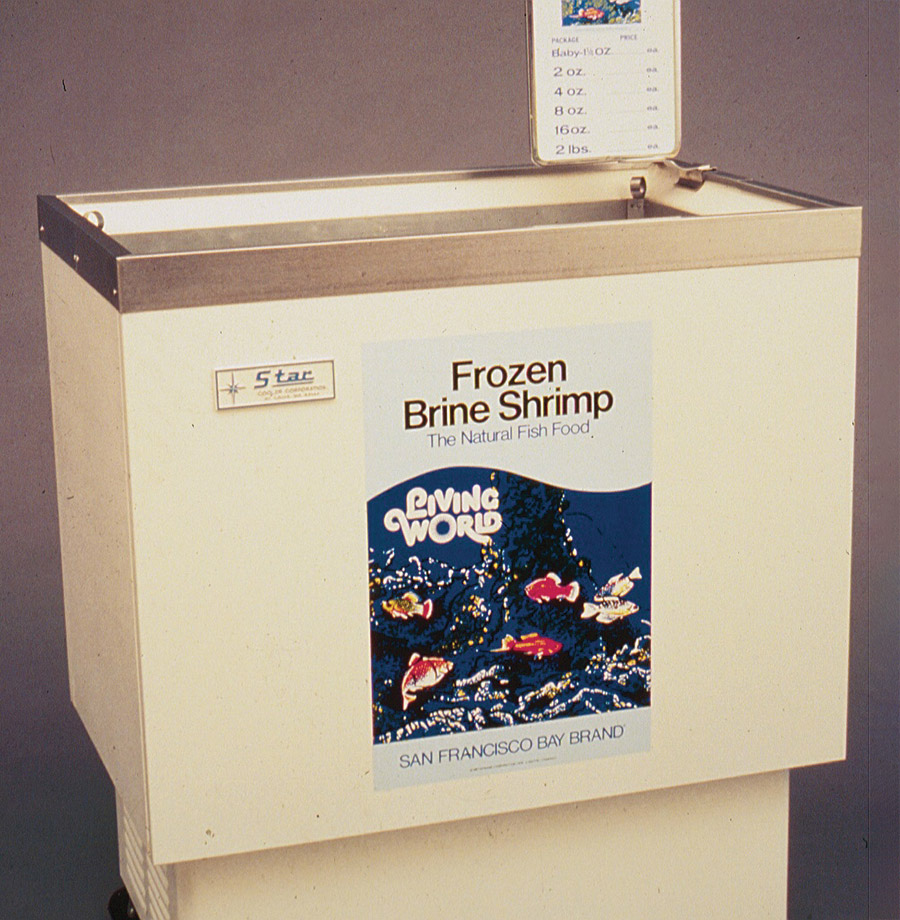
Post-Metaframe Era
Things went well until a dock strike changed Mattel’s fortunes in the middle of the 1970s, and Mattel divested all of the divisions of Metaframe, leaving San Francisco Bay Brand, Inc. under the Schmidt family ownership in 1979. After purchasing the company from Mattel, Anton Schmidt started to work in the University of California system, which was interested in the use of Artemia for aquaculture feed. At that time the commercial-aquaculture-farming industry was in its infancy and garnered interest worldwide by companies such as Cargill, Coca-Cola, and ConAgra, just to name a few.
The current president of San Francisco Bay Brand, Andreas (“Andy”) Schmidt, son of Anton Schmidt, started taking an active management role in the company in 1980, operating the San Diego Brine Shrimp, Salt Lake, and Salton Sea aquaculture facilities, which supported research and brine shrimp harvesting for SFBB’s aquaculture business. By the mid-1980s, Anton’s travels and marketing efforts in South America, China, the Middle East, and other locales around the world had proved instrumental in making brine shrimp a staple feed in the aquaculture industry in 38 countries.
Meanwhile SFBB added frozen plankton and krill, packaged by Murex (Canada Gold), to their line of foods for aquarium fish in 1984. These were the first non-brine shrimp products to be offered by the company.
San Francisco Bay Brand, Inc. made an offer to acquire Ocean Nutrition In 1987. The offer was turned down. Ocean Nutrition, founded in 1982, was the first company to produce frozen specialty diets for the marine and reef aquarium hobby; they were made in the San Diego area using fresh seafood and packaged in flat-pack bags. The diets were originally developed as a food for conditioning marine broodstock and were used to culture hundreds of thousands of clownfish, gobies, jawfish, and Garibaldi (Hypsypops rubicundus) starting in the late seventies.
Also, in 1987 SFBB started experimenting with bioenriching brine shrimp with Selco, a practice common in commercial aquaculture at the time, in collaboration with Artemia Systems Ghent. Then in 1988 they went on to bio-enrich brine shrimp with Spirulina and pharmaceuticals for testing with Abbott Laboratories. Enriching brine shrimp is the process of feeding live Artemia with nutritional formulations until the intestinal tract of the feeding shrimp is fully packed (gut-loaded). As soon as the shrimp are enriched they are immediately harvested and cryogenically frozen.
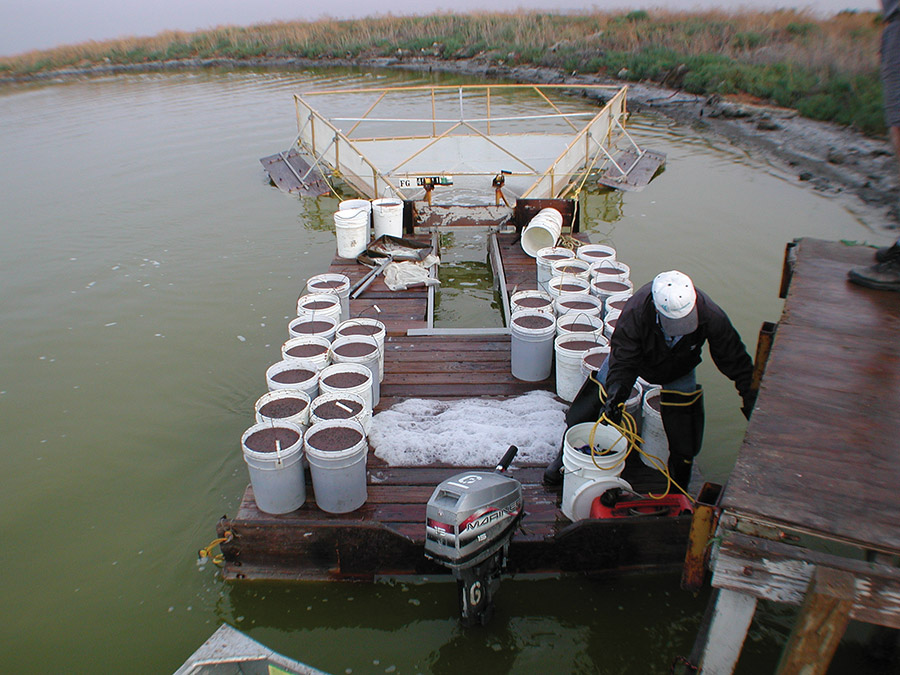
The Space-Age Era
By the 1990s, SFBB had developed a line of formulated diets to meet fishes’ specific nutritional needs based on their diets in the wild, while also expanding the range of frozen single-ingredient fish foods, to include bloodworms, silversides, fish eggs, mussel, squid and many others still used today.
The nineties were an exciting time for San Francisco Bay Brand. Besides expanding their offerings of frozen fish food products, they were also a corporate supporter of Sierra College’s Brine Shrimp Experiment. Sierra College conducted preliminary in-orbit experiments aboard the Space Shuttle Atlantis during the flights of STS-37 and STS-43. Artemia was used as a model system to assess microgravity effects on developing organisms.
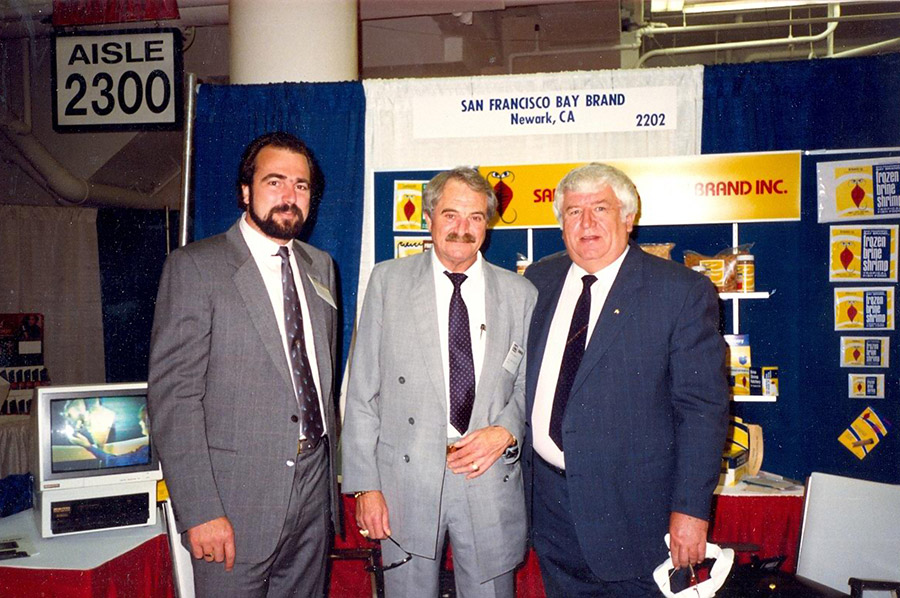
In 1992 Andreas Schmidt became president of San Francisco Bay Brand, Inc. and divested the aquaculture business to focus on the pet trade and zoological institutions. Since then he has continued to focus on providing high-quality all-natural diets for aquatic hobbyists, zoos, hatcheries, and public aquariums. He has served the pet industry as the president of The World Wide Pet Supply Association in 2000 and president of the Pet Care Trust Association from 1999 to 2003.
San Francisco Bay Brand brought blistered packaging (cubes) to the US as a standard in 1994 through cooperation with the Dutch firm Van Gerven B.V. who at the time specialized in bloodworms. Up until then, 95 percent of all frozen fish food in the US was packaged in flat pack bags holding a single slab of brine shrimp or other product. It is interesting to note that the packaging equipment used in 1994 for making frozen fish food cubes were modified machines marketed for packaging pharmaceuticals in blister packs. Machines manufactured for the purpose of packaging frozen fish food in blister packs had not yet been manufactured. This required SFBB to tool its own parts and dies and have a machine shop in-house.
Other SFFB Advances
- 1990s: First frozen reptile product, the Iguana Veggie Burger, developed in conjunction with Zoo Med Laboratories, Inc.
- In 1999, Andreas opens the company’s first China factory utilizing an existing building in Tianjin so that many of the single-ingredient products could be packaged fresh. These include some of the most popular single ingredient items on the market, which are indigenous to China, such as brine shrimp, mysis shrimp, cyclops, rotifers, and bloodworms. This made SFBB the only US-based producers of frozen fish food to own and operate their own factory in China, adhering to the company’s own high standards for processing and quality control.
- In 2000, SFBB purchases Murex (Canada Gold), a Canadian producer of frozen brine shrimp, plankton and krill. Also known as Artemia Canada, the company adopted a logo with Sally in a maple leaf.
- In 2004, Andreas sets out to build a new factory in Tianjin, along with SFBB’s biologist Steven Geerts (a graduate of the Artemia Reference Center, Ghent University). Built from the ground up, Steven now runs the factory and oversees the day-to-day operations of SFBBFE (Far East), where they process more than 100 metric tons of bloodworms on an annual basis along with many other single-ingredient products used today.
- SFBB opens a Louisville, Kentucky warehouse in 1994 dedicated to shipping. In 2007 they built a new warehouse in Louisville, to accommodate their growing product line: The new warehouse is essentially a giant freezer with an office inside. Its central location allows SFBB to efficiently ship to customers east of the Rockies, and in Central and Eastern Canada.
- In 2009 SFBB acquires Ocean Nutrition Americas, providing the respected ON brand with greater availability in domestic and worldwide markets.
- New products continue to be developed. In the past couple years, SFBB has added Capelin fish eggs, Coral Cuisine (coral food), and the Reef Multi-Pack (four varieties of food in one pack) to its frozen fish food lines.
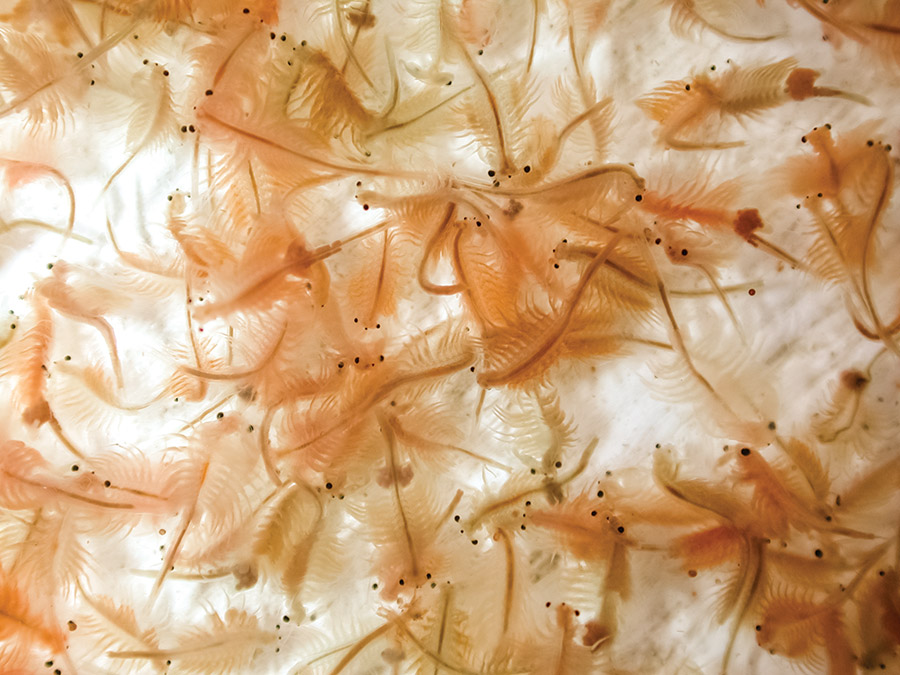
Retrospective Panorama
As for the beautiful salt ponds of San Francisco Bay where it all started, they are now part of the Don Edwards San Francisco Bay National Wildlife Refuge and are being restored as lower-salinity tidal wetlands. SFBB sources its live brine shrimp from inland aquaculture ponds in northern and central California and China, while Artemia cysts are harvested from Great Salt Lake in Utah. The actual species of brine shrimp in modern foods may be Artemia franciscana or Artemia parthenogenetica, the latter of which may be a descendant of Artemia salina or a domesticated hybrid form that has evolved in pond cultures in California and Asia. (The genetics and taxonomy of brine shrimp could fill volumes and are still of scientific interest as Artemia spp. are important both as fish foods and as ideal small invertebrate laboratory animals.)
Looking back, it is hard to imagine where the aquarium world and commercial aquaculture would be without the early discovery of the values of brine shrimp for aquarium husbandry. Many of the advances in keeping and breeding tropical fishes and invertebrates over the past five decades might never have been achieved without more nutritious, palatable, and convenient-to-use foods. And, with only a few of the innovative companies that helped to shape the modern aquarium hobby still being operated by family members of their original founders, it is refreshing to take a retrospective glance back to see how San Francisco Bay Brand started and how it has continued to thrive and innovate through the dedication of a second generation of the Schmidt family.
“As we celebrate our 50th year in business it is hard to believe that it has been 50 years,” says Andreas Schmidt. “Who would have predicted that a little crustacean known as brine shrimp (Artemia spp.) would lead us to develop so many wholesome products to meet the needs of aquatic pets?”
Jason Oneppo has been a salesman and head of research and development for San Francisco Bay Brand since 2001. He has been involved in the aquarium industry since the age of 14, and currently resides in Rhode Island with his wife Dana and their two lovely children, Layal and Jasmin.

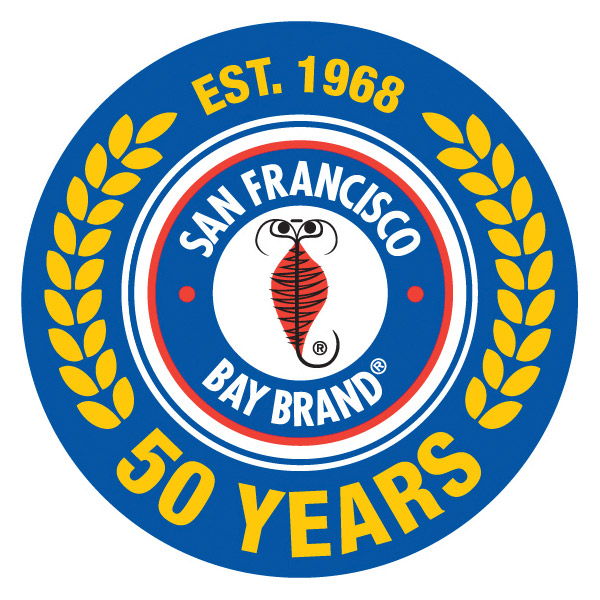
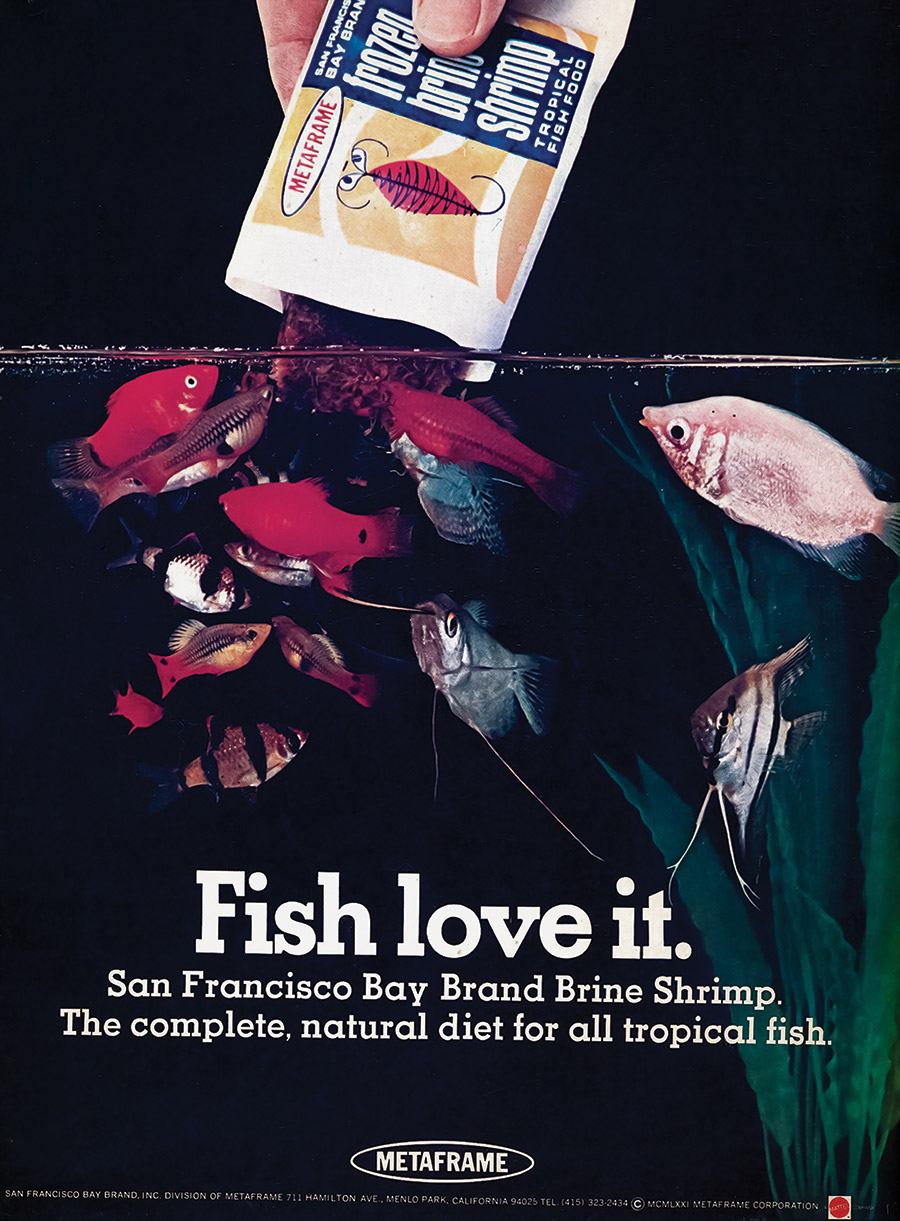

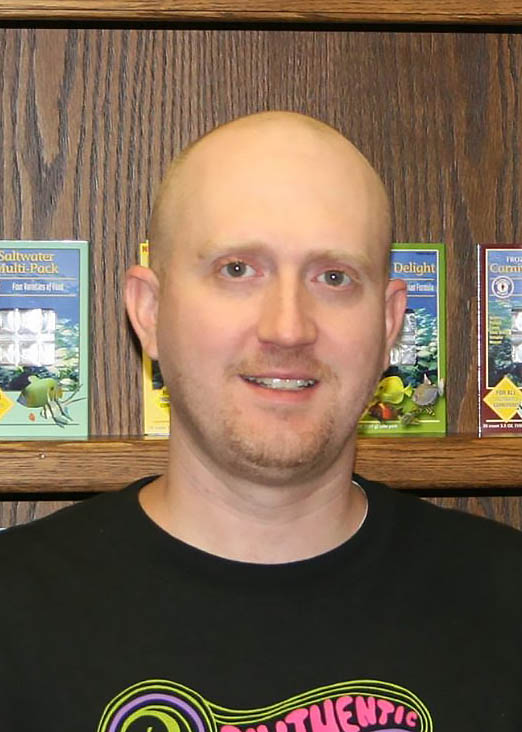





https://www.ouda.org.eg/tenders/request-for-quotation-marine-fish-seeds-in-the-hatcheries/
Thanks for that history! From the air, those south bay salt ponds in varying stages of evaporation made an amazing sight.
I still live in Mtn. View. I used to buy live shrimp to feed my fish, .50 cents per half oz, 90 cents for an ounce. You’d time your trip to the aquarium store based around when the shrimp came in.